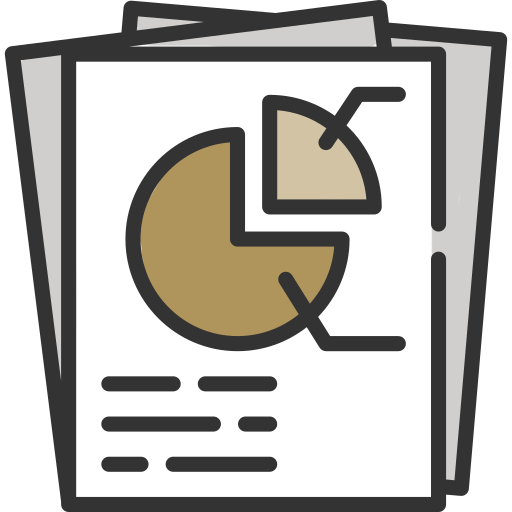
“Question: I want to invest in gold but am uncertain how much gold to buy. What proportion of my portfolio would be best held in gold? And Why?”
 Bullion.Directory’s Ask Ally Service
Bullion.Directory’s Ask Ally Service
By Alison Macdonald
Commercial Editor at Bullion.Directory
Alexander in Florida asked a very common question and there are two ways to answer, one very short and one far longer…
Typically when I’m asked ‘What portion of my portfolio should be gold?’ I tend to answer – How long is a piece of string?
Yes I understand that’s probably annoying, so I expand a little saying something like:
“It depends. 5% – 30% is a good range. Less has no real effect, whilst more can create an unbalanced basket.”
Still a short answer, and in 95% of cases it’ll be true.
However there’s a MUCH longer answer centered around two words: It Depends…
And so I’m going to cover that today.
The Role of Gold in Diversifying Portfolios
 When it comes to crafting a resilient and dynamic investment portfolio, the often repeated wisdom of not putting all your eggs in one basket stands true.
When it comes to crafting a resilient and dynamic investment portfolio, the often repeated wisdom of not putting all your eggs in one basket stands true.
This is where the concept of portfolio diversification comes into play.
Diversification is not just a strategy; it’s a prudent and common investing approach to managing risk and enhancing potential returns over time.
By spreading investments across various asset classes—such as stocks, bonds, real estate, and commodities like gold — an investor is able to reduce the impact of volatility or crashes in any single area.
Amidst these diverse assets, physical precious metals like gold occupy a unique and time-honored place.
Historically, gold has always been a symbol of wealth and a store of value, dating back to ancient civilizations. Its reputation as a ‘safe haven’ asset is well-earned as gold typically sees its value increase in times of economic uncertainty or when inflation looms.
Like now.
But gold is more than just a crisis commodity.
Its inclusion in a portfolio can provide balance and stability, helping to smooth out the bumps in a volatile investment journey. Unlike many other assets, gold’s value is not directly tied to the performance of the stock market or the health of any particular economy. This characteristic makes it an invaluable component in a well-diversified portfolio, offering a hedge against market fluctuations and currency devaluation.
In essence, including gold in an investment portfolio is a smart strategic move, grounded in centuries of economic history and backed by its enduring value and appeal.
Understanding Risk Tolerance and Investment Goals
![]() At the heart of any investment strategy lies a crucial, highly personal element: risk tolerance.
At the heart of any investment strategy lies a crucial, highly personal element: risk tolerance.
This is the degree of variability in investment returns that an individual is willing to withstand. Are you a safety-first kind of investor, or blow it all on a risky gamble and be damned type?
Understanding your risk tolerance is essential because it guides the kind of investments you’re comfortable making.
It’s a balancing act between your desire for returns and your ability to endure the potential for loss. Risk tolerance can vary greatly among investors; some may be risk-averse, preferring stability over higher potential returns, while others may be risk-takers, willing to accept higher volatility for the chance of greater rewards.
Risk tolerance is not just about your emotional comfort with market swings, but also about practical considerations such as your age, income, financial responsibilities, and the time horizon for your investment goals.
Younger investors, for instance, may have a higher risk tolerance since they have more time to recover from potential losses. In contrast, those nearing retirement might lean towards more conservative investments. I’ll cover this in more depth later.
Investment goals play a crucial role in determining how much gold or other assets you should hold.
These goals can be broadly categorized as short-term or long-term.
Short-term goals, like saving for a car or a vacation, might require more liquid and less volatile investments, as the investment period is relatively brief.
On the other hand, long-term goals, such as considering your retirement account, allow more room for incorporating assets like gold, which may have short-term fluctuations but generally hold their value or appreciate over the long term.
In the context of gold, understanding your risk tolerance and investment goals is vital.
Gold can serve as a stabilizing force amidst market volatility, potentially safeguarding your investments against economic downturns and inflation.
At the end of the day, your investments should align with your comfort level, financial objectives, and the time frame in which you aim to achieve these goals. Remember, the goal is not just to accumulate wealth or protect wealth but to do so in a manner that aligns with your individual needs and circumstances.
Gold’s Performance in Different Market Conditions
 Gold’s reputation as a safe-haven asset isn’t unfounded. Its performance during various economic scenarios — ranging from recessions to periods of inflation—provides a compelling case for its inclusion in a diversified portfolio.
Gold’s reputation as a safe-haven asset isn’t unfounded. Its performance during various economic scenarios — ranging from recessions to periods of inflation—provides a compelling case for its inclusion in a diversified portfolio.
We’ve seen gold reach new all-time highs in all of the past 3 major economic catastrophes – The 2008 crash, the global pandemic and most recently during the combined wars in Eastern Europe and the Middle East.
Understanding how gold behaves in different market conditions can offer valuable insights into its role as a potential stabilizer or hedge.
During Recessions:
Historically, gold has shown a unique resilience during economic downturns. When stock markets plummet, investors often flock to gold as a safe store of value.
This flight to safety typically results in gold prices rising while other asset classes suffer. For example, during the 2008 financial crisis, while stock markets experienced significant losses, gold prices climbed, eventually reaching new all-time highs. This counter-cyclical nature of gold can provide a cushion against portfolio losses during tough economic times.
In Periods of Inflation:
Gold is often seen as a hedge against inflation. In times when the purchasing power of fiat currencies diminishes due to rising prices, gold’s value tends to increase. We illustrate this in our interactive Gold buying Power Calculator.
This attribute was notably evident during the 1970s, a decade marked by high inflation, during which gold prices surged. Gold’s performance in inflationary periods stems from its intrinsic value and limited supply, distinguishing it from paper currencies that can be printed in unlimited quantities.
Compared to Other Asset Classes:
When comparing gold to other asset classes like stocks, bonds, and real estate, its role becomes even more apparent.
Stocks and bonds are heavily influenced by corporate earnings, interest rates, and economic policies, making them more volatile in certain economic scenarios. Real estate, while a tangible asset, is not as liquid as gold and can be subject to different market dynamics, such as changes in property laws or shifts in the housing market.
Gold’s relatively low and often inverse correlation with these asset classes means that its price movements are not always in line with stocks, bonds, or real estate – as seen in our Comparative Investment Return Calculator.
This characteristic enhances gold’s value as a diversification tool. When stocks fall, gold doesn’t necessarily follow suit and can even increase in value, providing a balancing effect in a diversified portfolio.
However, it’s important to remember that gold, like any investment, is not immune to fluctuations – while over the long term it sees consistent rises, over the short term it does fluctuate.
Its price can be influenced by a variety of factors, including global economic stability, interest rates, and currency values. Therefore, while gold can be a valuable part of a diversified portfolio, it should be balanced with other investments to mitigate risk and optimize returns across different market conditions.
Guidelines from Financial Experts
 Guidelines from financial experts on gold allocation in portfolios often vary based on investor profiles and market conditions. Commonly, a recommended range is between 5% and 15% of an investor’s portfolio.
Guidelines from financial experts on gold allocation in portfolios often vary based on investor profiles and market conditions. Commonly, a recommended range is between 5% and 15% of an investor’s portfolio.
However, some experts might suggest a higher percentage, particularly in times of increased economic uncertainty or high inflation. I’ve seen figures like 50-60% talked about as the ‘new’ gold allocation in our times of growing global instability.
Certainly for conservative investors or those closer to retirement, a more significant allocation to gold might be advised to protect against market volatility.
Conversely, for younger investors or those with a higher risk tolerance, a lower allocation may be recommended. The young can afford to take gambles on risky investments because even if it all goes very VERY wrong, their old age is still on some distant horizon.
This is why it’s important to consider the following guidelines in the context of your overall investment strategy and personal financial goals!
Ray Dalio’s Perspective
Ray Dalio, founder of Bridgewater Associates, has often emphasized the importance of gold in a diversified portfolio.
He suggests gold as a hedge against potential financial market risks and currency devaluation. While the number he gives for allocation varies from year to year Dalio’s approach always errs on the side of having a higher allocation to gold during times of economic uncertainty.
Warren Buffett’s Viewpoint
Warren Buffett, renowned investor and CEO of Berkshire Hathaway, has historically been skeptical about gold as an investment.
However, he recognizes the value of precious metals as a protective asset in times of high inflation or economic crises and has personally invested almost $1 billion in silver. More recently, Buffet’s Berkshire Hathaway’s invested in 18.5 million common shares in Canadian miner Barrick Gold. Better late than never as they say.
Marc Faber’s Recommendation
Marc Faber, an investment analyst and publisher of the “Gloom, Boom & Doom Report,” often advocates for a substantial allocation to gold.
He has recommended up to 25% in many instances and when pressed he typically says to invest 25% gold, 25% stocks, 25% bonds (and cash), and 25% real estate for maximum protection with flexibility.
Suze Orman’s Advice
Personal finance expert Suze Orman has spoken about the importance of gold as a portfolio diversifier.
Typically at the lower end of the allocation – at 5% – Orman suggests gold does form a component of a balanced investment strategy, particularly for long-term security.
These perspectives highlight that the recommended portion of gold in a portfolio can vary significantly based on economic conditions and individual investment philosophies.
Which again, brings me back to my initial disclaimer: It Depends.
Real World Examples
An advantage of working at Bullion.Directory is I have immediate access to colleagues and peers who are heavily involved in actively giving financial and investment advice.
I’m going to take a selection of real-world examples now to help illustrate the variety of gold allocation advice we see.
The Conservative Retiree: John’s Story
Background: John, a 65-year-old retiree, sought a stable investment to protect his life savings against inflation and economic downturns.
Allocation: Under his advisor’s guidance, John allocated 20% of his portfolio to gold, with the rest diversified in bonds, blue-chip stocks, and a small percentage in high-growth tech stocks.
Outcome: During a period of economic instability and high inflation, John’s portfolio remained relatively stable, with gold offsetting losses in other areas. His retirement funds sustained less impact compared to more aggressive portfolios.
The Young Professional: Sarah’s Scenario
Background: Sarah, a 30-year-old marketing professional, wanted to build a long-term investment portfolio with moderate risk.
Allocation: Her advisor recommended a 10% allocation to gold, balancing with mutual funds, index funds, and a few carefully selected tech stocks.
Outcome: Over the years, Sarah’s portfolio experienced steady growth. The gold component provided a safety net during market dips, ensuring her overall portfolio didn’t suffer drastic drops.
The High-Risk Investor: Alex’s Approach
Background: Alex, a 40-year-old entrepreneur, was comfortable with high-risk investments for potentially high returns.
Allocation: Alex was advised to hold a smaller 5% gold allocation, with the majority of Alex’s portfolio in high-risk stocks, emerging market investments, and a portion in a basket of cryptocurrencies and tokens.
Outcome: While Alex’s portfolio was volatile, the gold investment ensured that no matter what went down in other riskier parts – such as some significant losses in cryptocurrency market crashes and the bursting of the NFT bubble, Alex would have foundational wealth remaining in gold.
These case studies illustrate how gold can play a versatile role in different investment strategies, catering to varied risk tolerances and investment horizons – and show the importance of tailoring gold allocation to individual financial goals and market conditions.

Factors Influencing the Ideal Gold Allocation
Nobody invests in a vacuum. We all have unique individual needs, goals and financial positions – and we all float on the sea of global financial markets in an at-times tsunami producing geopolitical environment.
The following factors will play a role in an individual’s gold allocations:
1. Age and Investment Horizon
Younger Investors: For individuals in their 20s or 30s, a smaller allocation to gold might be suggested, perhaps around 5-10%. Their long-term investment horizon allows for a greater focus on growth-oriented assets like stocks. However, including some gold can provide a hedge against market volatility.
Pre-Retirement Investors: Those in their 50s or early 60s may increase their gold allocation to 10-20% or higher. As the investment horizon shortens, the focus shifts towards preserving wealth and reducing volatility, making gold a more attractive option.
2. Income Stability and Financial Security
High Income Stability: Individuals with stable and high income might opt for a lower gold allocation, using gold more as a diversification tool rather than a primary safety net.
Variable or Lower Income: For those with less stable incomes, a slightly higher gold allocation can serve as a financial buffer during uncertain income periods (This sums me up well!)
3. Existing Asset Distribution
Stock-Heavy Portfolios: In portfolios heavily weighted in stocks, especially during bull markets, increasing gold allocation can balance the risk and provide a hedge against market corrections.
Real Estate and Bonds: For portfolios with significant investments in real estate and bonds, a moderate gold allocation can add another layer of diversification, protecting against specific risks in these sectors.
4. Current Market Trends
Bull Markets: During stock market rallies, gold might seem less attractive. However, savvy investors often increase their gold holdings as prices are lower and to hedge against eventual market corrections.
Bear Markets: In downturns, gold often becomes a go-to asset. Increasing its allocation can protect the portfolio’s value.
5. Global Economic Outlook
Stable Economic Conditions: In times of global economic stability, a standard allocation to gold is usually sufficient as a diversification strategy.
Economic Uncertainty: In periods of high inflation, geopolitical tensions, or economic downturns, increasing gold allocation can provide a safety net against the heightened risks.
The ideal gold allocation is highly personal and depends on multiple factors, including age, income stability, current portfolio composition, and the broader economic environment. It’s essential to regularly review and adjust gold holdings in line with changing circumstances and financial goals.
Adjusting Gold Allocation Over Time
And in the same way as the world don’t invest in a vacuum – things change. We change. Our needs change.
1. Importance of Periodic Portfolio Reviews
Regular Assessment: It’s crucial to conduct periodic reviews of your investment portfolio, ideally on an annual basis or during significant market shifts. This helps ensure that your investment mix remains aligned with your risk tolerance, investment goals, and time horizon.
Rebalancing Strategies: As market values fluctuate, your portfolio’s original asset allocation can drift. Rebalancing is necessary to maintain your desired risk level. This may involve buying or selling assets, including gold, to return to your target allocation.
2. Responding to Life Changes
Career and Income Changes: A promotion, job change, or retirement can significantly impact your financial standing and risk tolerance. For instance, upon retirement, you might want to increase your gold allocation for greater stability.
Family Milestones: Events like marriage, the birth of a child, or purchasing a home can alter financial priorities and necessitate a portfolio adjustment, including the percentage of gold held.
3. Adapting to Shifting Market Conditions
Economic Growth Phases: During times of robust economic growth and bullish stock markets, you might reduce gold allocation slightly, capitalizing on higher returns from equities while still keeping gold as a safety net.
Recessionary Periods: In economic downturns, increasing gold holdings can be a prudent move to hedge against volatility and declining values in other asset classes. When the recession peaks and gold is at it’s highest and other assets, their lowest – gold can be sold to fund buying up low-price investments. Rinse and repeat.
4. Adjusting for Age and Retirement Proximity
Younger Investors: If you’re decades away from retirement, you might opt for a lower gold allocation, focusing more on growth. However, it’s still important to include gold for diversification and protection against market downturns.
Nearing Retirement: As retirement approaches, increasing gold allocation can help protect your life savings from market volatility and economic instability.
5. Global Events and Geopolitical Changes
Global Stability: In times of global stability, maintaining a consistent gold allocation can suffice. It serves as a hedge against unforeseen market shifts.
Crisis Periods: During geopolitical tensions or global crises, increasing gold allocation can safeguard your portfolio against the increased risks associated with such events.
As you can see, adjusting your gold allocation is not a set-and-forget strategy.
It requires ongoing attention and modifications in response to personal life changes, market dynamics, and global economic conditions.
Staying informed and adaptable ensures that your portfolio continues to meet your evolving financial needs and goals.
Conclusion: Your Gold Investment Strategy
![]() Every investor’s financial situation is unique. Factors like age, income, risk tolerance, and personal goals play a pivotal role in determining the ideal gold allocation.
Every investor’s financial situation is unique. Factors like age, income, risk tolerance, and personal goals play a pivotal role in determining the ideal gold allocation.
Searching, recognizing and respecting these individual differences is essential in crafting a strategy that aligns with one’s specific needs and aspirations.
The ‘one size fits all’ approach does not apply to gold investment. Adjusting your strategy over time in response to personal life changes, market fluctuations, and global economic trends is crucial for maintaining a balanced and effective portfolio.
The financial world is constantly evolving. Keeping abreast of market trends, economic forecasts, and geopolitical events will empower you to make more informed decisions regarding your gold investment.
Regularly review and reassess your investment strategy. Seek professional advice when needed, and stay engaged with your financial planning. This proactive approach ensures that your portfolio not only meets your current needs but is also poised to adapt to future changes, optimizing overall performance.
Remember, the right gold allocation is a personal journey, one that requires continual learning, adjustment, and a keen understanding of your individual financial landscape. Stay informed, stay engaged, and let your unique circumstances guide your path to a balanced and prosperous investment future.
Alison Macdonald

Ask Ally, is your direct line to gold investment wisdom. Alison “Ally” Macdonald, with her extensive experience and sharp tongue, cuts through clutter to offer honest, insider takes on your gold investment questions.
Need insights or industry secrets? Ally’s ready to deliver, combining professional expertise with a smattering of Glasgow patter. Get ready for straightforward, expert guidance from a one-time gold shill turned good guy. Ask Ally Today










 Material provided on the Bullion.Directory website is strictly for informational purposes only. The content is developed from sources believed to be providing accurate information. No information on this website is intended as investment, tax or legal advice and must not be relied upon as such. Please consult legal or tax professionals for specific information regarding your individual situation. Precious metals carry risk and investors requiring advice should always consult a properly qualified advisor. Bullion.Directory, it's staff or affiliates do not accept any liability for loss, damages, or loss of profit resulting from readers investment decisions.
Material provided on the Bullion.Directory website is strictly for informational purposes only. The content is developed from sources believed to be providing accurate information. No information on this website is intended as investment, tax or legal advice and must not be relied upon as such. Please consult legal or tax professionals for specific information regarding your individual situation. Precious metals carry risk and investors requiring advice should always consult a properly qualified advisor. Bullion.Directory, it's staff or affiliates do not accept any liability for loss, damages, or loss of profit resulting from readers investment decisions.

Leave a Reply